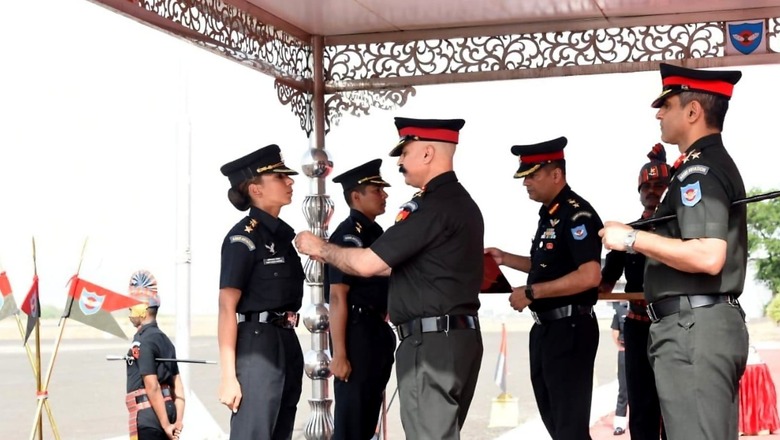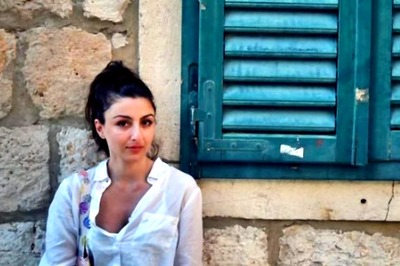
views
Captain Abhilasha Barak on Wednesday became the first woman combat aviator in the Indian Army. She has been awarded the coveted ‘wings’ along with 36 Army pilots by the director-general of the Army Aviation during a ceremony held at Combat Army Aviation Training School in Nashik.
“Captain Barak became the first woman officer to join the Army Aviation Corps as combat aviator after successful completion of the combat Army aviation course,” an official said. She hails from Haryana and was commissioned into the Army Air Defence Corps in September 2018.
The moment has become a proud one for the country, even amidst a push towards increased inclusion of women in the forces. News18 takes a look at the nuances:
SC Ruling on NDA and Permanent Commissions
The Supreme Court, in a landmark decision on February 17, 2020, had ordered that women officers in the army be given permanent commissions, rejecting the Centre’s claim, that their physiological limits were based on “sex stereotypes” and “gender discrimination against women.”
It had ordered that all serving SSC women officers be considered for permanent commission within three months, regardless of whether they had completed 14 or 20 years of service.
And in September 2021, the government told the Supreme Court that women can attend military colleges and be eligible for permanent commissions. The ruling came less than a month after the apex court authorised women to take National Defence Academy entrance exams (NDA).
The court had previously criticised the government for refusing to allow women to sit for NDA exams. The court stated, “It is a policy choice based on gender discrimination.”
The NDA too is modifying its infrastructure with the creation of separate enclosures, cabins, additional washrooms and also putting in place a robust security apparatus to welcome women cadets from mid-2022, Major General Arvind Bhatia (retd) had earlier told News18.com.
Detailing the requisite changes to be made in the NDA for women cadets, he had said that initially a portion of an existing squadron—which houses around 110 cadets—would be segregated and associated infrastructure would be created for the first batch. A different set of women instructors, doctors including gynaecologists, and other requisite support staff would also have to be appointed for the women cadets when they join in 2022, he had added.
On the issue of permanent commission, earlier, women were enlisted in the army under the Short Service Commission (SSC) and did not qualify for the PC, which allowed officers to serve for a longer period of time.
Women have been allowed for short-service commissions in the armed services’ education and legal departments since the early 1990s, in response to court proceedings. Women had gained access to eight new areas throughout the years, including engineering, intelligence, and logistics.
What is the Permanent and Short Commission?
A Permanent Commission entails a career in the army till retirement, whereas a Short Service Commission lasts for ten years, with the option of resigning or converting to a Permanent Commission at the conclusion of the ten years, according to a report by the Firstpost.
A four-year extension is available if an officer does not receive Permanent Commission. Since 1993, women have been able to join the Indian Army as officers. They were initially brought in under the ‘Special Entry Scheme,’ which was later turned into the Short Service Commission (SSC).
Permanent commissions were made available to women in the Judge Advocate General (JAG) and Army Education Corps streams in 2008.
And in October last year, thirty-nine women officers of the Indian Army were granted Permanent Commission. This was the pinnacle of the fight for permanent commission as 71 female SSC officers, who had been denied permanent commission, had petitioned the Supreme Court for a permanent position in the army. The Centre told the Supreme Court that just 39 of the 71 officers were declared qualified for permanent commission, with 25 others having “issues of discipline” and the rest being medically unfit.
The Debate on Women in Combat
More than 3,500 women serve in the military, but they were barred from front-line combat duties until the government authorised an Indian Air Force (IAF) proposal to induct females into the fighter stream in 2015. Women are still barred from warships, tanks, and infantry combat positions. Onboard the Navy’s maritime reconnaissance aircraft, which is a combat mission, women serve as pilots and observers.
And the inclusion of women in combat jobs, such as Infantry and Armoured Corps, have long been a source of discussion, particularly in India. While there are a hoard of opinions on the issue, some argue the move will necessitate a societal shift first. Women have just lately been inducted into infantry combat positions in countries such as the United States and the move would require long-haul changes.
But Women Will ‘Keep Going’
Capt Abhilasha belongs to the Army Aviation Corps, which is a component of the Army that was formed in November 1986. The Corps is headed by a Lt Gen rank officer known as Director General of Army Aviation. Over the years, the corps has expanded exponentially with the addition of new units and state of the alt equipment like Cheetah Dhruv, Rudra light combat helicopter and remotely piloted aircraft.
The three services have gradually opened up key postings for women in the last few years. In 2018, flying officer Avani Chaturvedi of the Indian Air Force scripted history by becoming the first Indian woman to fly a fighter aircraft solo. She flew a MiG-21 bison in her first solo flight.
Chaturvedi was part of a three-member women team commissioned as flying officers in July 2016, less than a year after the government decided to open the fighter stream for women on an experimental basis.
In 2020, the Navy announced deploying its first batch of women pilots on the Dornier maritime aircraft. In a significant move, the Army in 2019 began the process of inducting women into the military police.
The role of the military police includes policing cantonments and army establishments, preventing breach of rules and regulations by soldiers, and maintaining the movement of soldiers as well as logistics during peace and war.
With inputs from agencies
Read all the Latest Explainers here




















Comments
0 comment